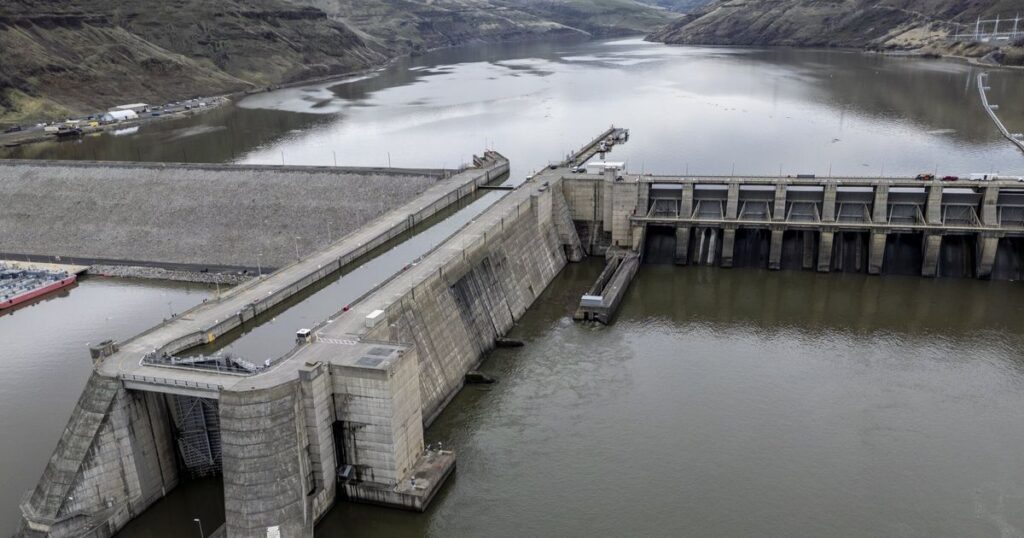Now we have a outstanding alternative to bolster imperiled salmon and steelhead runs within the Columbia River Basin, strikes that may strengthen our economic system, assist clear vitality and uphold the values that outline our Northwest lifestyle.
The Northwest Power and Conservation Council — a little-known however important multistate company — is constructing a highway map for the subsequent spherical of investments in clear vitality and salmon restoration within the Columbia Basin. Ought to the council absolutely embrace this chance, we may see the adoption of science-based measures that regional fish managers consider will make a distinction for salmon runs perilously near extinction, in addition to a set of suggestions for assembly clear, reasonably priced and dependable vitality objectives.
Sadly, the Bonneville Energy Administration, the area’s largest vitality provider, is working to thwart this potential. BPA has taken the unprecedented place that it ought to now not be obliged to fulfill the council’s long-held salmon restoration objectives, regardless of hydropower’s well-documented and far-reaching harms to our native salmon and steelhead runs. BPA’s stance is surprising, cynical and alarming.
The council should push again on BPA. A long time of collaboration and hard-won progress on each clear vitality and salmon restoration are in danger — coming at a time when threats from a altering local weather develop extra dire. In truth, that is the council’s job, articulated in its mission assertion: “To make sure, with public participation, an reasonably priced and dependable vitality system whereas enhancing fish and wildlife within the Columbia River Basin.”
Mandated by the 1980 Northwest Energy Act, the council is overseen by governor-appointed representatives from Washington, Oregon, Idaho and Montana. It has the duty and authority to make sure that BPA and different dam operators make good investments in vitality sources and work to revive salmon and steelhead runs. It does this by creating two back-to-back plans — a 20-year energy plan, revised each 5 years, and a fish and wildlife program, additionally revised each 5 years.
Whereas the council is presently working to develop the subsequent iteration of each plans, at difficulty proper now could be its fish and wildlife program, constructed on a long time of research that created benchmarks for salmon and steelhead restoration.
In keeping with the council’s rigorous work, 10 million to 16 million grownup salmon and steelhead traditionally returned to the Columbia River yearly, a quantity that has plummeted to fewer than 2.5 million grownup fish right this moment. The council additionally decided that the largest driver of that decline was hydropower — the handfuls of dams and their reservoirs which have reduce off and degraded hundreds of miles of as soon as extremely productive spawning, rearing and migratory habitat.
The council used this evaluation to determine its numerical goal for the Columbia Basin — an annual common return of 5 million adult fish. It has repeatedly reaffirmed that interim purpose — a fraction of historic abundance however an vital begin — as a solution to handle losses attributable to hydropower and drive BPA’s operations.
The council is gathering enter because it creates its 2026 fish and wildlife program. Many, together with state and tribal fish managers, have proposed measures that might assist the area lastly obtain this interim purpose of 5 million fish — from improved hydrosystem operations to the reintroduction of salmon in areas blocked by dams.
BPA, nonetheless, is looking on the council to scale back or eradicate its long-held purpose of 5 million returning grownup fish and argues it has no duty to attempt to meet the goal whether it is retained. In its feedback to the council on Could 19, BPA mentioned it now not desires the goal to be a authorized obligation or “a yardstick for program success.”
BPA’s place is dangerous — an insult to the ratepayers who’ve invested thousands and thousands of {dollars} within the energy purveyor over time and to all of us who care about wildlife and tribes. It additionally doesn’t sq. with BPA’s obligations underneath the Northwest Energy Act, which mandates that BPA “shield, mitigate and improve” fish and wildlife populations harmed by dams and their warm-water reservoirs.
Certainly, BPA’s effort to stroll away from its obligations strikes on the coronary heart of our area — our financial vitality, leisure fishing tradition, commitments to tribes and particular lifestyle.
A lot is at stake. We urge the Northwest Energy and Conservation Council to step up throughout this historic second and work to assist the area transition to scrub, reasonably priced and dependable vitality, and rebuild ample wild salmon and steelhead populations earlier than it’s too late.

